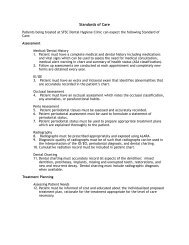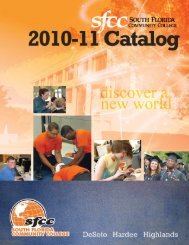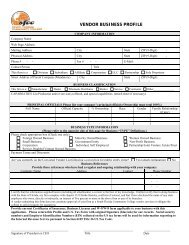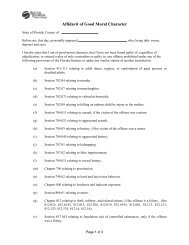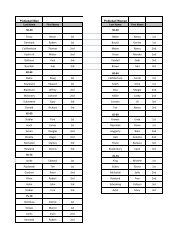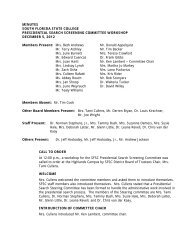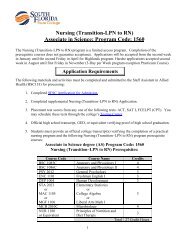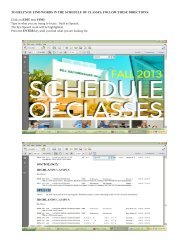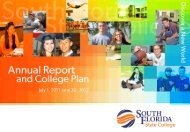SACS Compliance Certification Report (PDF) - South Florida State ...
SACS Compliance Certification Report (PDF) - South Florida State ...
SACS Compliance Certification Report (PDF) - South Florida State ...
Create successful ePaper yourself
Turn your PDF publications into a flip-book with our unique Google optimized e-Paper software.
in their courses. It became apparent that the term General Education SLO would not work at SFCC asmany students in the Applied Sciences and Technologies (AS&T) Division do not fall under the standardGeneral Education Program philosophy, even though they were required to take general educationcourses. To help make assessment of student learning transparent across the campus, the AcademicQuality Committee (AQC) decided to rename the GenEd SLOs to Student Learning Outcomes CollegeWide (SLO-CoWs).During "Welcome Back" activities in the fall of the 2008-2009 academic year, a presentation was given toall faculty and staff introducing the SLO-CoWs concept. Basic assumptions included that generaleducation is the responsibility of the faculty as a whole – not individual departments, and that GenEdassessment should be minimally intrusive for both faculty and students and should use existing examplesof student work. Subsequent to this presentation, the AQC hosted monthly professional developmentworkshops that focused on each of the five specific SLO-CoWs to help faculty better understand theindividual outcomes and the unfamiliar idea of college-wide assessment. Faculty could see which SLO-CoWs applied to their courses and how to highlight them in their syllabi. During the inaugural academicterm of college-wide assessment of general education, the initial goal was to assess one of the fiveoutcomes across the college. However, during the second term assessment efforts were expanded toinclude all five outcomes in AS&T. Department chairs and program managers in both the A&S and AS&Tdivisions were asked to develop curriculum maps (General Education Map; Applied Science Map)outlining where each course of instruction aligned with the SLO-CoWs. Curriculum maps depict howclasses are selected for the process of assessing general education competencies by predeterminingwhich outcomes are introduced, emphasized, or reinforced in each course. During the followingyear, rubrics were developed to assist faculty in measurement of each outcome.Once the idea of general education assessment was institutionalized, the name of the competencies waschanged to General Education Student Learning Outcomes (SLOs) to better align with current language. AGeneral Education Subcommittee was appointed to organize, lead, and review all general educationassessment efforts across the college. The group reports to Academic Quality Committee. The presentassessment model evolved from the work completed and improved upon over several years beginning in2005.The General Education Student Learning Outcomes currently in use across the college include thefollowing:General Education Outcome #1: Students will demonstrate the ability to communicate (read, write,speak, and listen) effectively.A. Students will be able to construct an essay that demonstrates excellent composition skillsincluding a clear and thought- provoking thesis, appropriate and effective organization, livelyand convincing supporting materials, effective sentence skills, and perfect or near perfectmechanics including spelling and punctuation.B. Students will be able to present a speech that is appropriate for the purpose, occasion, andaudience; contains a clear and identifiable organizational structure and format; using languagethat is clear, vivid, and appropriate; and incorporates effective nonverbal behaviors including eyecontact, gestures, facial expressions and posture.General Education Outcome # 2: Students will demonstrate the ability to reflect, analyze, synthesize,and apply knowledge.A. Students will be able to exhibit accurate and full explanations of deductive and inductivereasoning processes; discern differences and similarities among theories, view information frommultiple perspectives; formulate questions; recognize sound and unsound arguments;distinguish facts from inferences and opinions; and demonstrate the ability to transfer thinkingfrom the classroom to the real world.<strong>South</strong> <strong>Florida</strong> Community College Page 120 / 202General Education Outcome #3: Students will demonstrate knowledge and application ofmathematical and scientific principles and methods.



